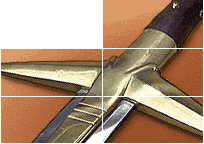Armourer Greats: Anton Peffenhauser
An Article by Freiherr Alexander Von Reitzenstein
 The Augsburg armourer Anton Peffenhauser was one of the four or five most outstanding practitioners of his art in the entire sixteenth century. He stayed in the limelight for more than fifty years, from 1545 to 1603, and it is really surprising how many of his surviving works—more than those of any of his contemporaries—can be attributed to their maker with certainty, or at least with a very high degree of probability.
The Augsburg armourer Anton Peffenhauser was one of the four or five most outstanding practitioners of his art in the entire sixteenth century. He stayed in the limelight for more than fifty years, from 1545 to 1603, and it is really surprising how many of his surviving works—more than those of any of his contemporaries—can be attributed to their maker with certainty, or at least with a very high degree of probability.
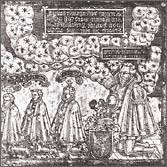
Fig. 1—Part of an engraving executed about 1600 showing Master Anton Peffenhauser.
(Berlin, Kupferstichkabinett)
|
In the second half of the sixteenth century, the art of the armourer lost much of its vigor, and celebrated masters like Desiderius Helmschmied and Matthäus Frauenpreis could not long struggle against the decline; only Anton Peffenhauser was not swept along—on the contrary, his position grew stronger, probably more because of his dealings in the foreign trade, i.e. export business, than in the home market. But everywhere, also of course at home, his works remained in high esteem until his death, and for a long time after.
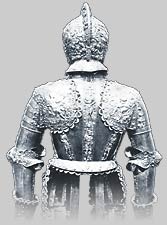
Fig. 2—Embossed armour of King Sebastian of Portugal, Circa 1550.
|
The Correr Museum in Venice possesses an etched and figured iron plate, once the lower part of an epitaph on a tomb in an Augsburg church (Fig. 1). On it are shown "Master Anthonius Peffenhauser," his two wives and his fourteen children. Next to him is his coat of arms, the figure of which—a triquet, i.e. three legs revolving about a common center, at which they join—was also his mark as armourer. In fact, this device definitively identifies his work, and in the absence of it an attribution would have to be supported by documentary evidence.
Peffenhauser's stylistic range varies from lush ornamentation to extreme simplicity. One of the most remarkable bas-relief armours known, believed to have been property of King Sebastian of Portugal (1554-78, killed in Morocco at the Battle of Alcazarquivir), now in the , Madrid, bears his mark (Fig. 2). At this point a question arises quite naturally: did he, Peffenhauser, himself do the bas-relief chiseling, or did he provide a fine armour in the white for elaboration by an independent artist? The answer is that of the independent artist.
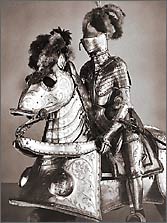
Fig. 3—Armour for man and horse, 1580.
|
We know, for example, that another chiseled suit in the Real Armerķa, once property of King Philip II of Spain (1527-98), made by the master Desiderius Helmschmied in about 1549-50, was ornamented by the goldsmith Jörg Sigman, no doubt on direct solicitation of Helmschmied. In terms of their structures and architectures, these two suits are so similar that the student is led to suspect that one served as the model for the other, King Phillip's probably following King Sebastian's. But the chiseling on the Peffenhauser suit reaches a level of artistry and refinement far above that attained by Jörg Sigman on the Helmschmied armour: its plasticity is more robust and vigorous, the play of light and shadow is far richer, more colorful, and the spaces to be ornamented are generously and fluidly treated in grand style, without little patches of frills and gee-gaws.
However good the work of Jörg Sigman, its author was a goldsmith—while the creator of the Peffenhauser ornaments would seem to have been a sculptor, an artist. Nevertheless, surface ornamentation, be it ever so ingenious and praiseworthy, always remains subordinate to the iron underbody wrought by the armourer. Even if the ornamentation were, hypothetically, eliminated, there would remain the splendid sculpture of the armour itself, a work of art in its own right.
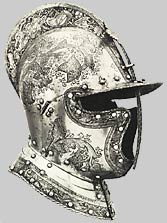
Fig. 4—Burgonet from equestrian armour of Elector Christian I of Saxony, c 1540.
|
In fact, very few suits were ever so lavishly, so royally chiseled—for obvious economic and social reasons—and indeed, these perfections fall outside the normal artistic province of the armourer. The far more standard ornamental technique used throughout the sixteenth century was acid etching; this, too, was but rarely carried out by the armourer, but the designs for it were planned by him and carefully tailored to the spatial requirements of the suit in question. How beautifully the results of this technique and this working hand-in-hand could be is exemplified by the helmet Fig. 4.
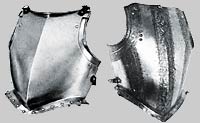
Fig. 5—White breastplate (left), Breastplate with broad etched and gilded bands (right).
|
The white breastplate in Fig. 5, almost surely worn by one of St. George's squires, is an example of pure functional form in the armourer's art, sufficiently strong to create its own canon of aesthetics for appraisal and judgment, without need of ornamentation. But when even such a form is well treated by the etcher, as is the other piece in Fig. 5, its structure and fluidity can be splendidly accentuated (one must imagine this specimen as it was before rust attacked it—the broad bands finely etched in bright relief against a gilt ground, the central rib dominating the composition).
Another example of fine etching is armour for foot combat shown in Fig. 6. It is made of blued iron and etched with gilt decoration. The etched decoration consists of large tendrils curling from a central stalk, edged with a black line and incorporating a delicate gilt leaf pattern. The Augsburg view mark appears on the breastplate. It is one of twelve made in 1590 on orders of the Electress Sofia of Saxony as a Christmas present for the Elector Christian I; here the gold-on-blue theme is used to emphasize the frontal rib of the breastplate.
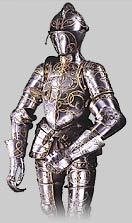
Fig. 7—Tilt armour from the "interlaced" garniture of Rudolf II (1532-1612) and his brother, the Archduke Ernst (1553-1595).
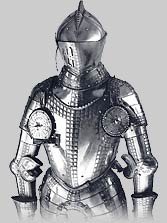
Fig. 9—Bright tournament armour with gilt etched bands, Circa 1585.
|
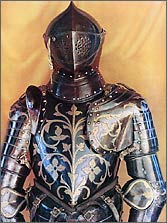
Fig. 6—Gilt etched designs on blue ground, created for the Elector Christian I.
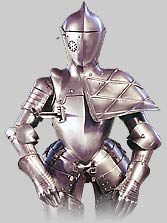
Fig. 8—German tilt armour, Circa 1590, specialized for the joust. (The Wallace Collection, London)
|
The garniture shown in Fig. 7, with its interlaced etched decoration, must rank amongst the most beautiful examples of the armourer's art dating to the second half the sixteenth century. The pattern, in the imperial colors of black and gold, forms elegant knots, with distinctive foliage and hop sprigs filling the loops.
But pure armour—that is, undecorated iron body covering combining maximum protection with maximum mobility, existing solely toward a functional end and relying for artistry on the perfection of its execution—is the final proof of an armourer's worth. Such a work is shown in Fig. 8: a suit destined for the so-called "royal joust"; while not signed by Peffenhauser, careful comparison with similar specimens in Paris and in London, all known and signed Peffenhauser products, makes the attribution a safe one. The structure of heavy, smooth steel plates dispenses with all ornament—and indeed, there is no need of any, for the work is an organic whole complete within its own volumetrics and enobled by the clear fulfillment of the purpose for which it was created.
The tournament armour shown in Fig. 9 was comissioned by the Elector August in about 1585, for his son Christian. Made of bright iron, it is decorated with etched and gilt bands. It includes a gorget, breast- and backplates, arm-defenses, long tassets and greaves. The mail sabatons have solid toe-taps. The close-helmet with its comb has a pointed projecting visor and two laminated throat and neck lames. A half-chamfron and armoured saddle also belong to this armour. The decoration consists of bands of shallow embosed squares and rectangles in a checkered pattern, set with blackened etched lines, and bordered by narrow bands of scrolling foliage. The Augsburg view mark appears on breast- and backplates.
For these notes we have chosen but a very few of the great number of surviving works by the Augsburg master. But even these are sufficient for showing the wide range his art embraced: from the richest of parade armours to the simplest jousting suit. When he set out in his long career, barely twenty years old, in the middle of the sixteenth century, the Augsburg school was still in vigorous flower; in his old age he saw it languishing into oblivion without hope of revival.
Anton Peffenhauser was one of the few who knew how to survive in the age of armour's decline and fall, and to keep the Great Tradition alive until the very closing years of the century.
About the Author
Baron von Reitzenstein, born in 1904 in Germany, received his degree in Art History in 1928 and dedicated his career to public service and to arms-historical literature. In addition to many essays and studies, he has published books on the art of the armourers of Augsburg, Nuremberg and Landshut, i.e. Der Waffenschmied and Rittertum and Ritterschaft.
|
|
